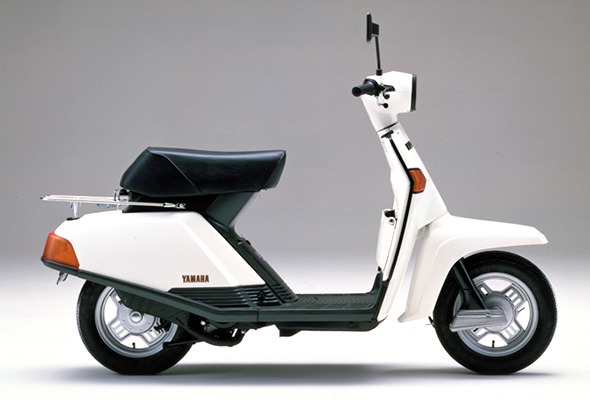The 'Twist and Go' Revolution: How CVT Transmissions Transformed Scooters in the 1980s
The article discusses how the development of Continuously Variable Transmission (CVT) in the 1980s facilitated the 'Twist and Go' phenomenon that transformed the design, operation, and user experience of scooters. The article explores the mechanics behind CVT in scooters, the impact of 'Twist and Go,' prominent scooter models that utilized CVT, and the legacy of CVT transmissions in scooters. The article concludes by highlighting the enduring impact of the 'Twist and Go' revolution on personal transportation and inspiring present and future innovations.
MOPED CULTURE YAMAHA JAPAN 1980'S
10/31/20233 min read


The 'Twist and Go' Revolution: How CVT Transmissions Transformed Scooters in the 1980s
Introduction: Understanding the Transformation
The 1980s marked a significant turning point in the field of personal transportation, primarily influenced by the rise in popularity of scooters. The era saw the emergence of the 'Twist and Go' technology facilitated by Continuously Variable Transmission (CVT). This development fundamentally transformed the design, operation, and user experience of scooters and rocked the two-wheeler industry. This introductory section provides an overview of this transformation and sets the stage for a detailed exploration of the mechanics of CVT in scooters, the resultant 'Twist and Go' phenomenon, its impact, and the legacy it has left behind.
The Mechanics behind CVT in Scooters
CVT derives its name from its ability to facilitate a continuously variable range of gear ratios, unlike traditional transmissions that offer a fixed number of gear ratios. This feature grants CVT the flexibility to maintain a constant engine RPM while adapting to varying vehicle speeds. CVT in scooters primarily utilizes a system of two pulleys linked by a V-belt. Each pulley comprises two cone-shaped halves that shift in relation to each other, determining the effective diameter of the pulley. This arrangement allows the V-belt to operate at different pulley diameters, leading to adjustable gear ratios. This seamless adaptability is the crux of the 'Twist and Go' capability in CVT scooters, a key factor distinguishing them from their manually-operated counterparts.
The 'Twist and Go' Phenomenon and its Impact
The 'Twist and Go' phenomenon, facilitated by CVT in scooters, redefined the rider's experience in the 80s. The revolution replaced the arduous task of manual gear shifting with a simplified operation. Riders only needed to 'twist,' or rev up the scooter's throttle, and 'go,' with the scooter seamlessly taking care of gear shifting. The phenomenon significantly improved riders' comfort and convenience, promoting wider adoption of scooters. Additionally, the power-packed performance of CVT scooters, made possible by keeping the engine speed at an optimal constant, resulted in an impressive boost in speed, a factor contributing significantly to their soaring popularity.
Prominent Scooter Models that Utilized CVT
The 1980s witnessed the inception of many prominent scooter models that embraced the 'Twist and Go' technology. Among the frontrunners was Yamaha, with their innovative CVT transmission first introduced in the 1981 Yamaha Beluga CV50E Scooter. These vehicles, characterized by robust performance and high torque, not only made urban commuting easier but also opened up possibilities for long-distance journeys. These scooters leveraged the efficiency of CVT to offer step-less acceleration, leading to a pleasant ride experience without the regular jerks of gear shifting. The appeal of these models contributed significantly to scooters racing away from mopeds in terms of popularity.
The Legacy of CVT Transmissions in Scooters
The innovation of CVT played a pivotal role in setting a new course for scooters. The effortless 'Twist and Go' operation, the ease of handling, and seamless acceleration offered by CVT scooters redefined personal mobility and established a precedent for future transportation solutions. Indeed, the enduring popularity of CVT scooters evidences their lasting impact. Today, the CVT technology is not just limited to scooters but also finds significant applications across various other power vehicles, including automobiles, tractors, and earthmoving equipment. The pioneering shift towards CVT in the 80s truly represents a hallmark in the history of motor vehicles.
Conclusion: Looking Back at the 'Twist and Go' Revolution
The 'Twist and Go' revolution brought about by CVT transmissions in the 80s not only reshaped the scooter market but also set the tone for future advancements in the domain of personal transportation. As we look back, we witness an era marked by innovative thought and transformative action, characterized by the rise of CVT scooters. These vehicles, much more than a means of transport, represent a time when personal mobility was redefined and convenience was championed. The 'Twist and Go' revolution thus lives on, reminding us of a transformative chapter in motor history while continuing to inspire present and future innovations.
